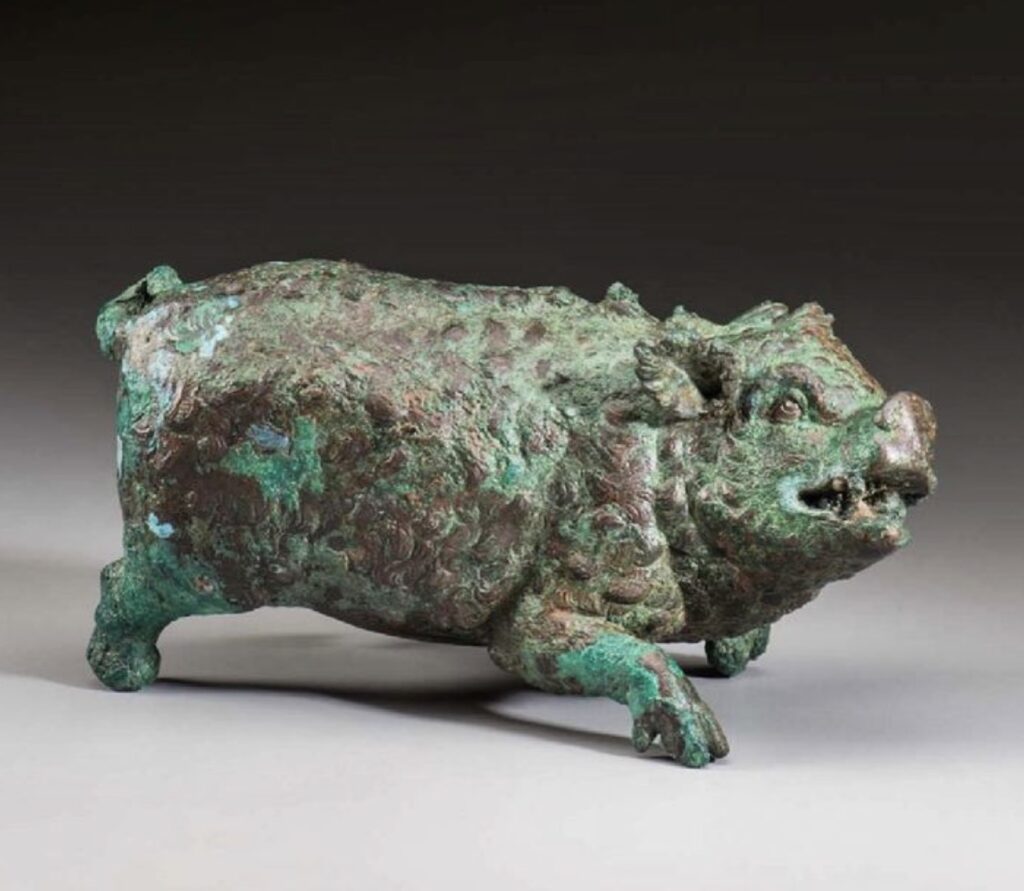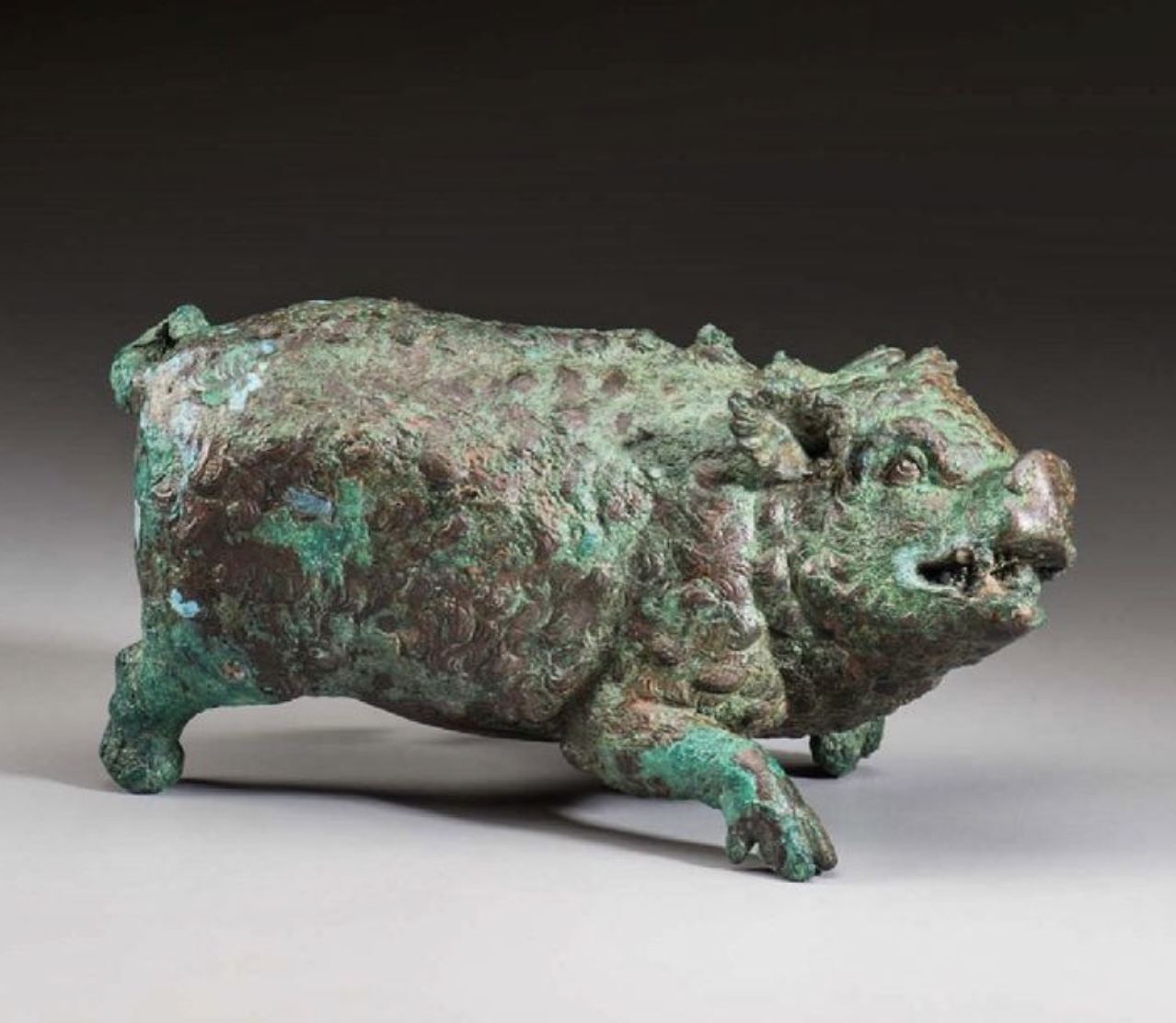Bristling with hostile porcine energy, this bronze in Boston is a gem of Hellenistic realism. One can almost hear her barking…
Rearing slightly back on hind legs and poised to charge, the sow is a most excellent example of bronze-casting on a small scale (not so small, she is nearly 20 cm long). Her eyes are inlaid in silver, her teeth are bared, and nipples on the under side of her prodigious belly (alas not visible in the photo). The wiry bristles that cover her body and ears are gloriously detailed and textured, cast and then chased after cooling.

Domesticated pigs were fairly common in Ancient Greece (souvlaki, anyone?), and presumably the artist had male choice of live models. The piglet was a symbol of agricultural abundance and fertility (presumably because of the high birthrate of pigs),
In addition to being a food source, they had important functions in religious cults. Piglets, specifically, were the favoured gift to Demeter (perfect for the goddess of the harvest and of motherhood), and deposits of an astonishing number of butchered piglet bones are frequently found in her sanctuaries. The literary sources bear this out. At Eleusis, we are told, each pilgrim carried a piglet with them to dedicate.
Enough to make any sow snarl and charge…




